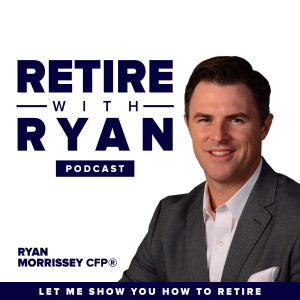
Want to make a Roth IRA contribution, but you earn over the adjusted gross income limit? Never fear, the backdoor Roth conversion is here! On this episode, I’m doing a deep dive into backdoor Roth conversions and the seven mistakes most people make when attempting this financial maneuver.
You will want to hear this episode if you are interested in...- What is a backdoor Roth IRA? [1:44]
- The Pro-Rata rule [3:49]
- Keeping IRA costs down [6:36]
- Completing the necessary paperwork [8:02]
- Why you need to invest [9:40]
- Reconciling your IRA providers [11:07]
- Making sure you have the correct retirement plan [11:34]
A backdoor Roth IRA conversion offers a workaround for contributing to a Roth IRA when your income surpasses the set limits. Typically, direct contributions to a Roth IRA have income thresholds. If you earn more than the specified modified adjusted gross income for your filing status, you're restricted from contributing directly. However, with the backdoor Roth, you can sidestep this limitation.
The process involves making a non-deductible contribution to a traditional IRA and then converting that amount into a Roth IRA. This method allows contributions regardless of income, but it's crucial to follow specific procedures to avoid potentially costly errors. Mistakes in the process could lead to tax liabilities or complications, so careful attention to the conversion steps is essential to make the most of this strategy.
Avoiding Pro-RataOne of the easiest mistakes when using a backdoor Roth conversion is forgetting the Pro-Rata rule. If you've got other IRAs—SEP, SIMPLE, or traditional—those sums factor into your conversion calculation. Imagine intending to move $6,500 from a traditional IRA to a Roth, thinking it's tax-free. But if that $6,500 is only a fraction of a larger total, say $100,000, only 6.5% of your conversion is tax-exempt. You end up paying tax twice! First for the non-deductible IRA contribution, then for the conversion. To avoid this, you want to clear out those IRAs before the year's end.
The trick lies in removing any other IRA funds from your name before the backdoor Roth maneuver. You could shuffle the money into an employer's 401k if you have one or create a self-employed 401k if applicable. Surprisingly, even starting a small business could qualify you to set up a 401k plan, allowing you to move those funds out of your name easily. Just remember if you plan to contribute to this new plan, it should match your earnings from that business. But if your goal is to simply clear the path for a backdoor Roth IRA, this method can do the trick. Listen to this episode for more backdoor Roth conversion tips!
Resources Mentioned- Retirement Readiness Review
- Subscribe to the Retire with Ryan YouTube Channel
www.MorrisseyWealthManagement.com/contact
More Episodes
 2024-10-01
2024-10-01
 2024-09-24
2024-09-24
 2024-09-10
2024-09-10
 2024-09-03
2024-09-03
 2024-07-23
2024-07-23
 2024-07-02
2024-07-02
Create your
podcast in
minutes
- Full-featured podcast site
- Unlimited storage and bandwidth
- Comprehensive podcast stats
- Distribute to Apple Podcasts, Spotify, and more
- Make money with your podcast
It is Free
- Privacy Policy
- Cookie Policy
- Terms of Use
- Consent Preferences
- Copyright © 2015-2024 Podbean.com





